hei tiki height 5 3/4in (14.8cm) Provenance Sir Jacob Epstein Collection, London Paul Guillaume, Paris French Private Collection Hotel Drouot, Paris, June 19, 1980, lot 200 Thomas Murray Mill Valley, California Maureen Zarember, Tambaran Gallery, New York Mark and Carolyn Blackburn Collection, Honolulu, Hawai'i Published Kaeppler, Adrienne, Polynesia—The Mark and Carolyn Blackburn Collection of Polynesia Art, University of Hawai'i Press, Honolulu, 2015, fig. 457 "The most highly valued variety of pounamu (nephrite) was inanga after the young whitebait fish because of its pearly-white, bluey-white or light green colour." (Neich, Roger, Pounamu, Maori Jade of New Zealand, David Bateman Ltd, Auckland, 1997, p. 4) "The hei tiki is perhaps the best known of all Maori artifacts. 'Hei' meaning hanging, i.e., 'a pendant', and tiki refers to the human image in general. The hei tiki was regarded by the Maori as a memento of a deceased ancestor or a succession of ancestors through whose hands it had passed from generation to generation. Thus hei tiki and other ornaments gained value through contact with the mana of the great ones of the past." (Terrence Barrow, The Decorative Arts of the New Zealand Maori, Charles E. Tuttle Co., Tokyo, 1964, p. 28) Nephrite pendants, hei tiki, were worn around the neck by high-ranking Maori men and women. "Experiments indicate that a hei tiki could be made in 500 to 1000 hours of work depending on the size" (Barrow, 1964, p. 28). Red was a symbol of mana (prestige, power, and status) and why many Maori artifacts were painted red. According to Major General H. G. Robley (Pounamum, London, T. J. S. Guilford & Co., London, 1915, p. 56), "When in the middle of the nineteenth century objects of European manufacture began to be introduced by traders it was found that red sealing wax had a particular fascination for the Maori, who often used it to fill the eyes of tiki often replacing the old shell with the red wax and also for the adorning other greenstone articles." Compared to the proportionally narrow shape of most hei tiki, this pendant, expertly carved using stone tools with traces of flax cord "sand" cutting and sawing on the reverse, is exceptional for its size, its voluminous body with tense curves and counter-curves combining both power and ornamentation. The utilization of inanga stone and red sealing wax to enhance its mana, together with the exceptional proportions and sculptural qualities place this hei tiki among the most extraordinary treasures of Maori art.
hei tiki height 5 3/4in (14.8cm) Provenance Sir Jacob Epstein Collection, London Paul Guillaume, Paris French Private Collection Hotel Drouot, Paris, June 19, 1980, lot 200 Thomas Murray Mill Valley, California Maureen Zarember, Tambaran Gallery, New York Mark and Carolyn Blackburn Collection, Honolulu, Hawai'i Published Kaeppler, Adrienne, Polynesia—The Mark and Carolyn Blackburn Collection of Polynesia Art, University of Hawai'i Press, Honolulu, 2015, fig. 457 "The most highly valued variety of pounamu (nephrite) was inanga after the young whitebait fish because of its pearly-white, bluey-white or light green colour." (Neich, Roger, Pounamu, Maori Jade of New Zealand, David Bateman Ltd, Auckland, 1997, p. 4) "The hei tiki is perhaps the best known of all Maori artifacts. 'Hei' meaning hanging, i.e., 'a pendant', and tiki refers to the human image in general. The hei tiki was regarded by the Maori as a memento of a deceased ancestor or a succession of ancestors through whose hands it had passed from generation to generation. Thus hei tiki and other ornaments gained value through contact with the mana of the great ones of the past." (Terrence Barrow, The Decorative Arts of the New Zealand Maori, Charles E. Tuttle Co., Tokyo, 1964, p. 28) Nephrite pendants, hei tiki, were worn around the neck by high-ranking Maori men and women. "Experiments indicate that a hei tiki could be made in 500 to 1000 hours of work depending on the size" (Barrow, 1964, p. 28). Red was a symbol of mana (prestige, power, and status) and why many Maori artifacts were painted red. According to Major General H. G. Robley (Pounamum, London, T. J. S. Guilford & Co., London, 1915, p. 56), "When in the middle of the nineteenth century objects of European manufacture began to be introduced by traders it was found that red sealing wax had a particular fascination for the Maori, who often used it to fill the eyes of tiki often replacing the old shell with the red wax and also for the adorning other greenstone articles." Compared to the proportionally narrow shape of most hei tiki, this pendant, expertly carved using stone tools with traces of flax cord "sand" cutting and sawing on the reverse, is exceptional for its size, its voluminous body with tense curves and counter-curves combining both power and ornamentation. The utilization of inanga stone and red sealing wax to enhance its mana, together with the exceptional proportions and sculptural qualities place this hei tiki among the most extraordinary treasures of Maori art.
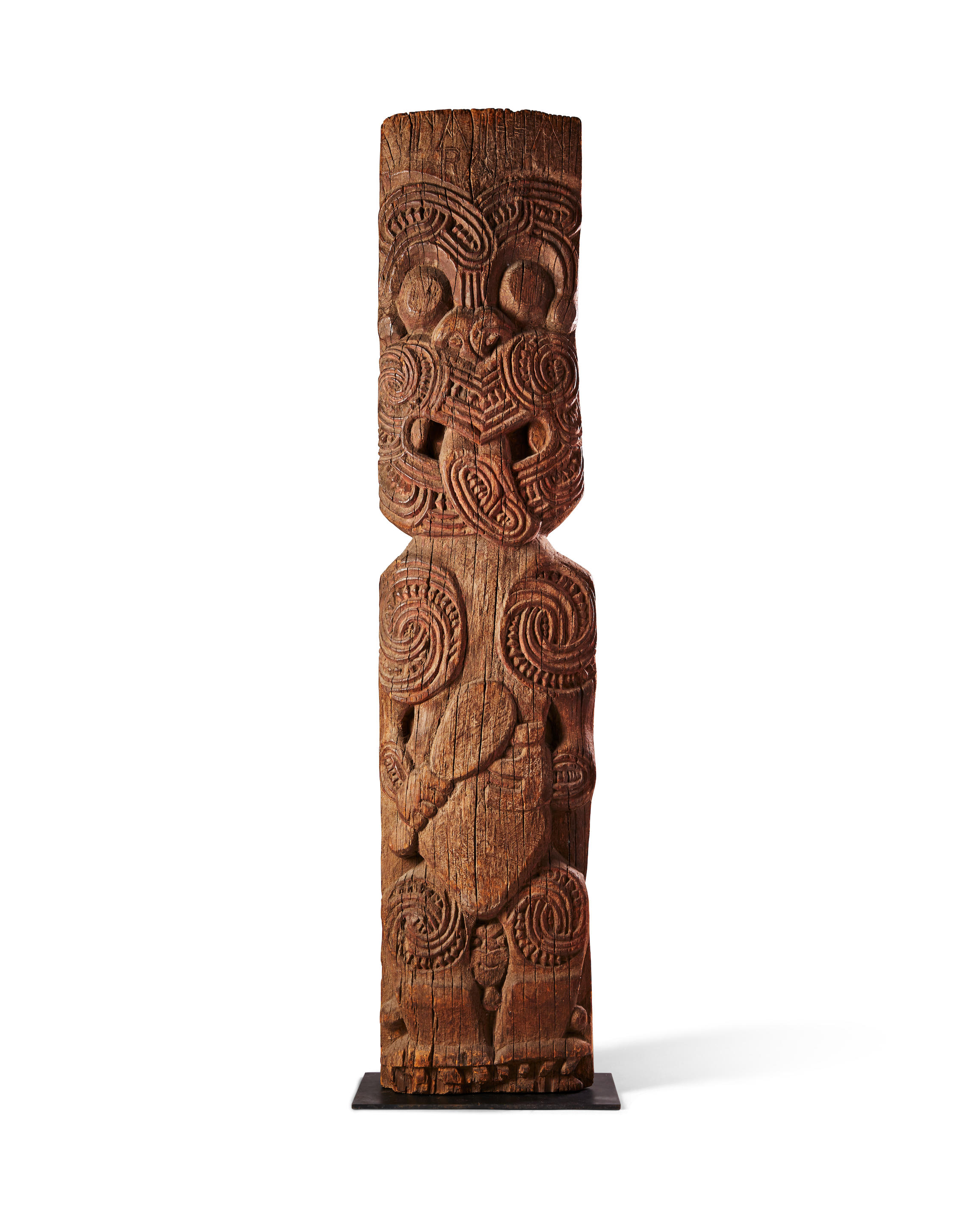
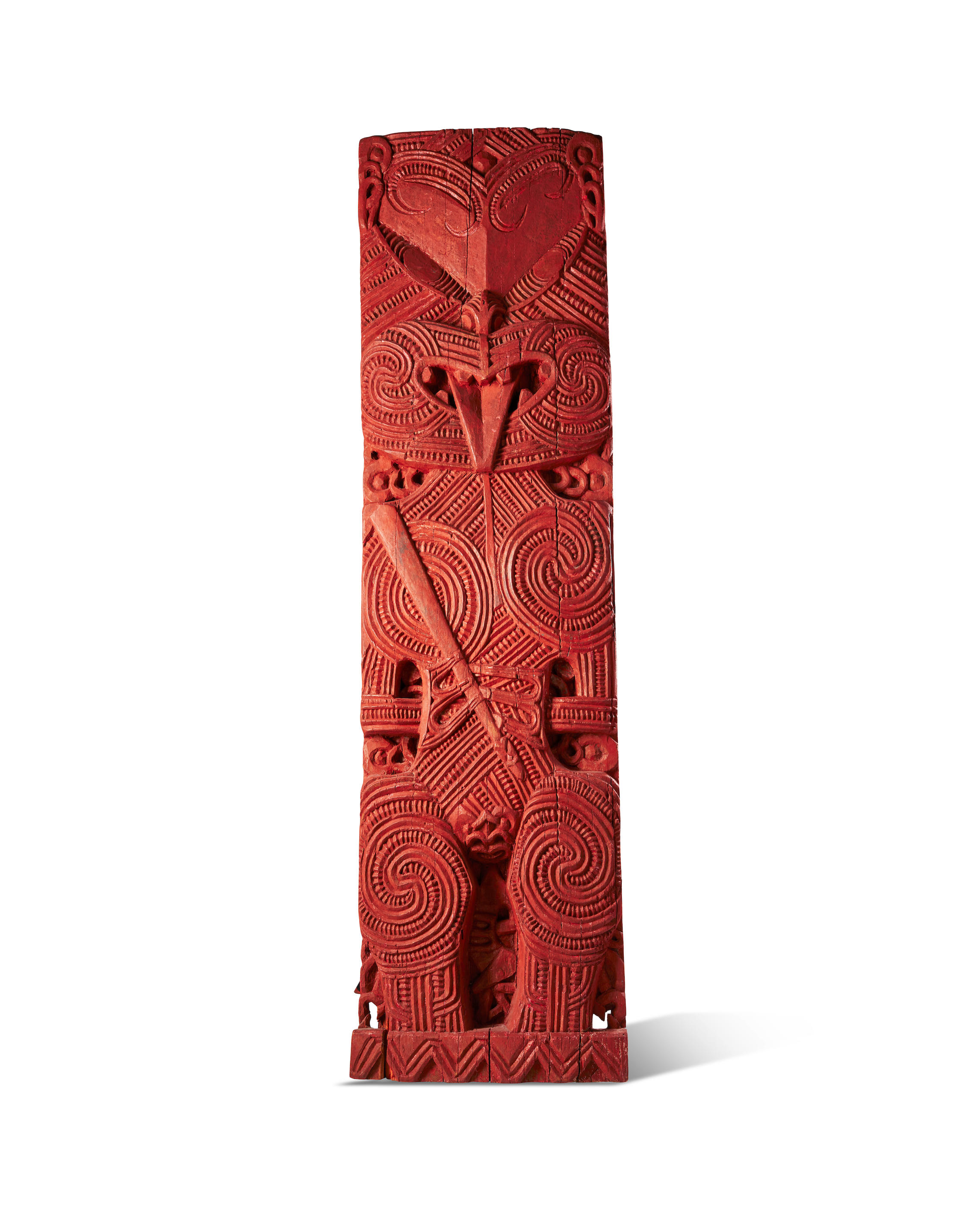

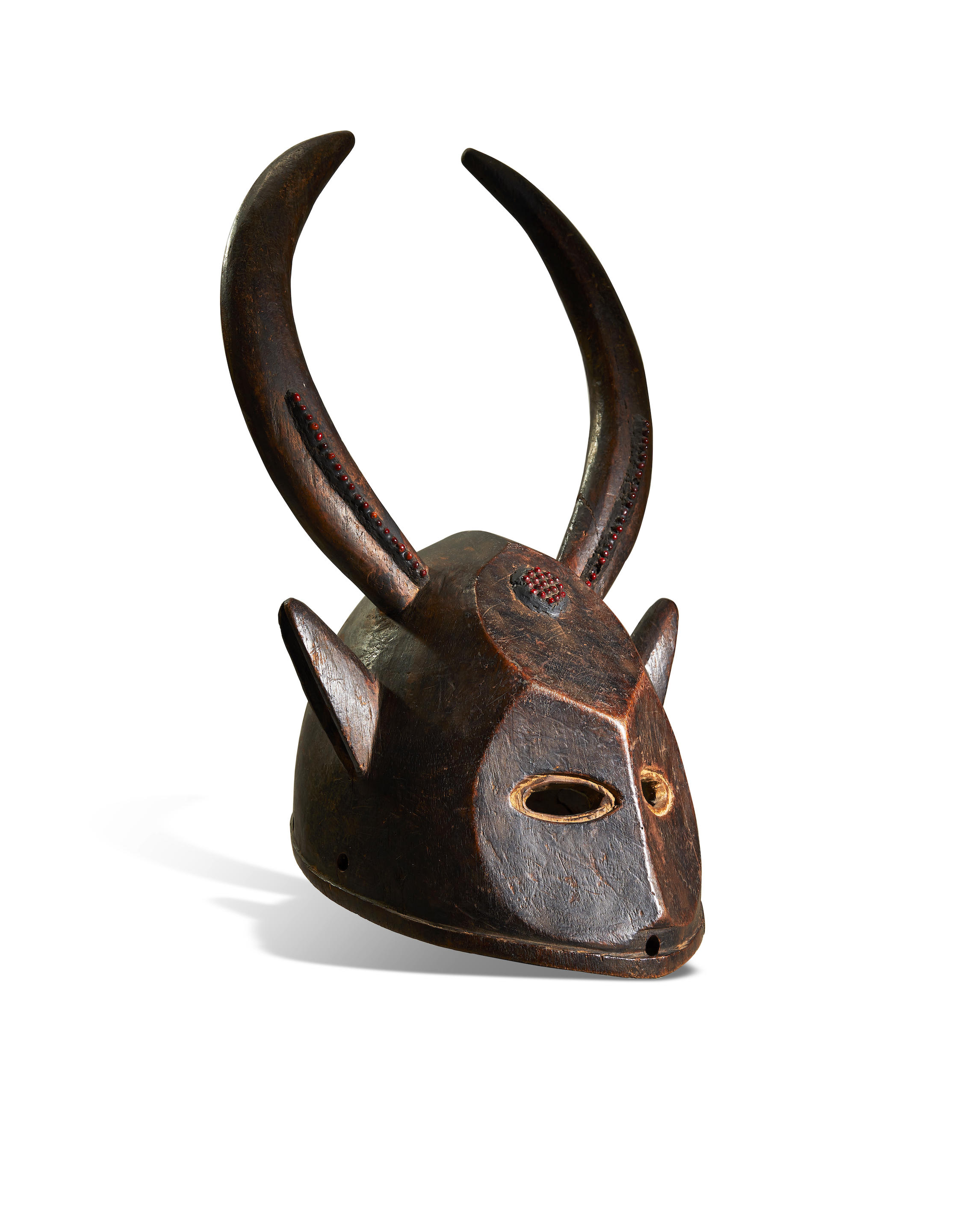
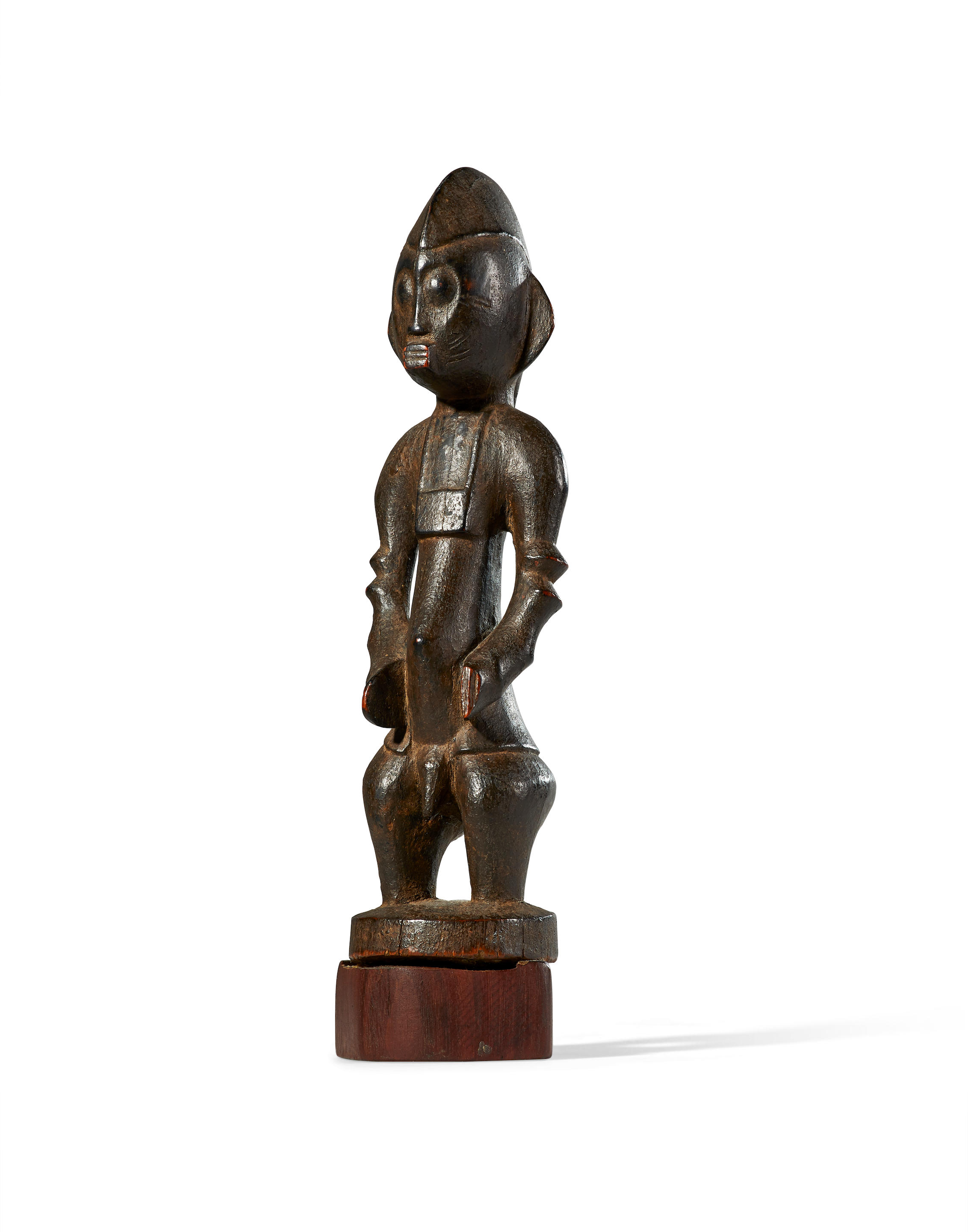
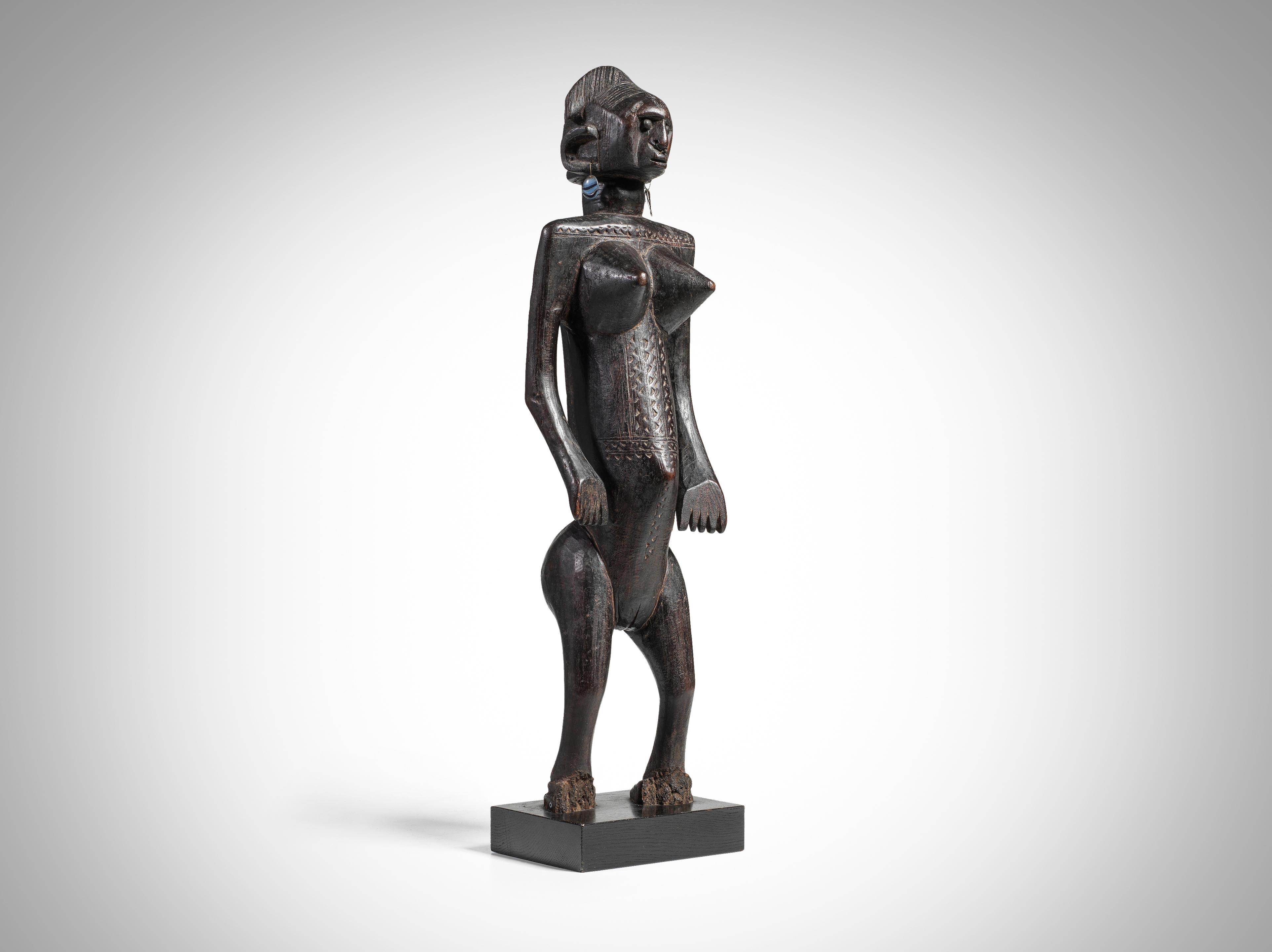
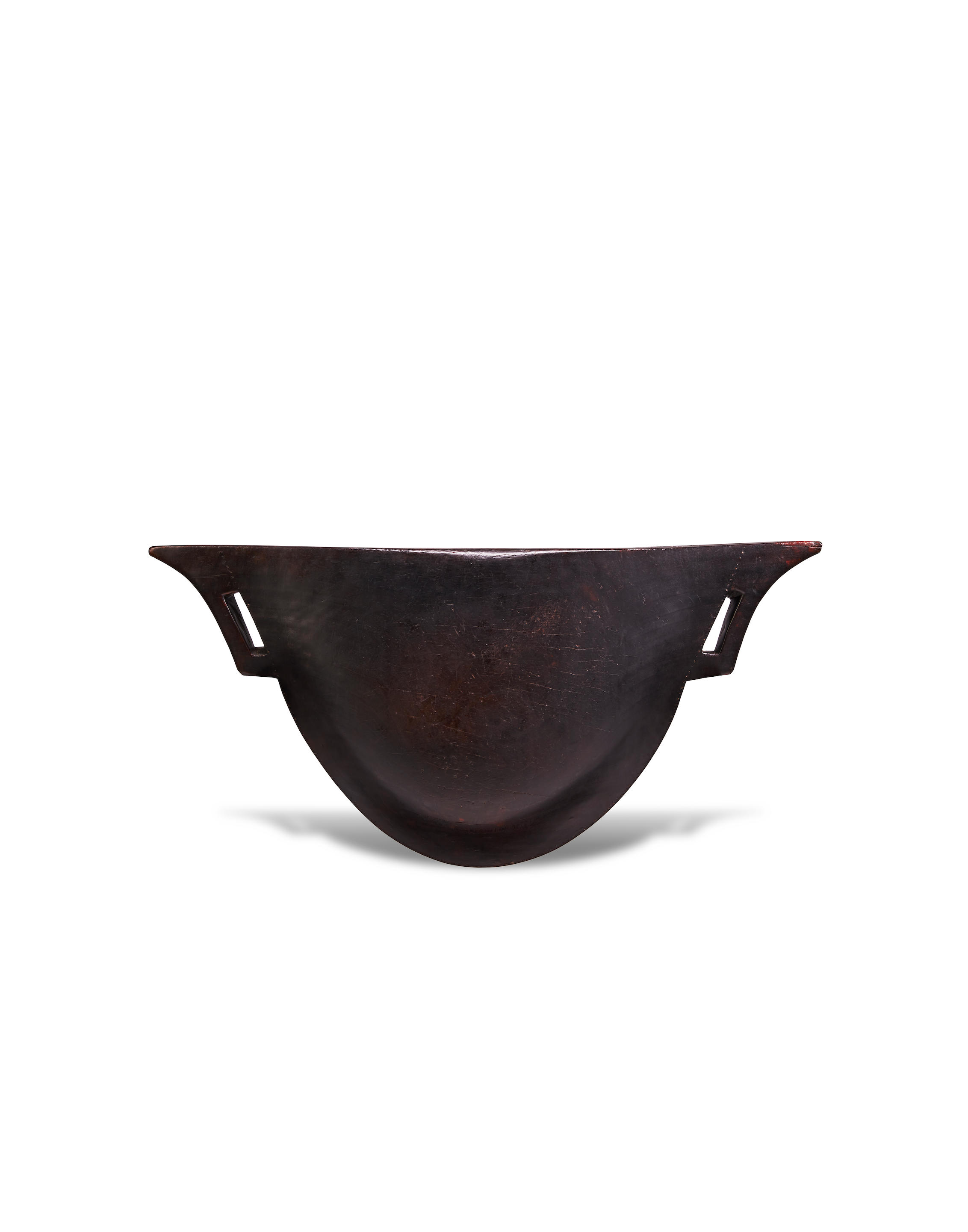
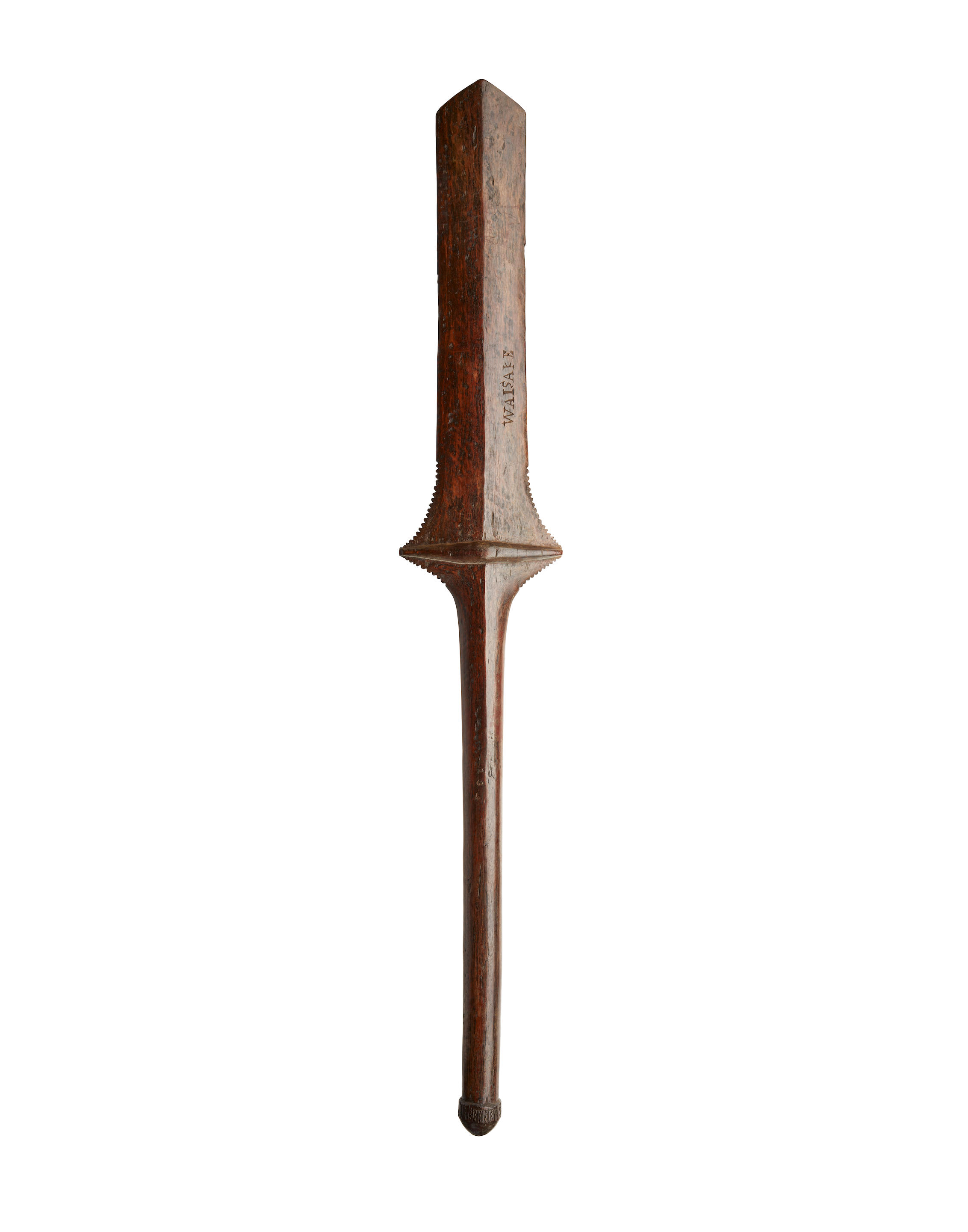
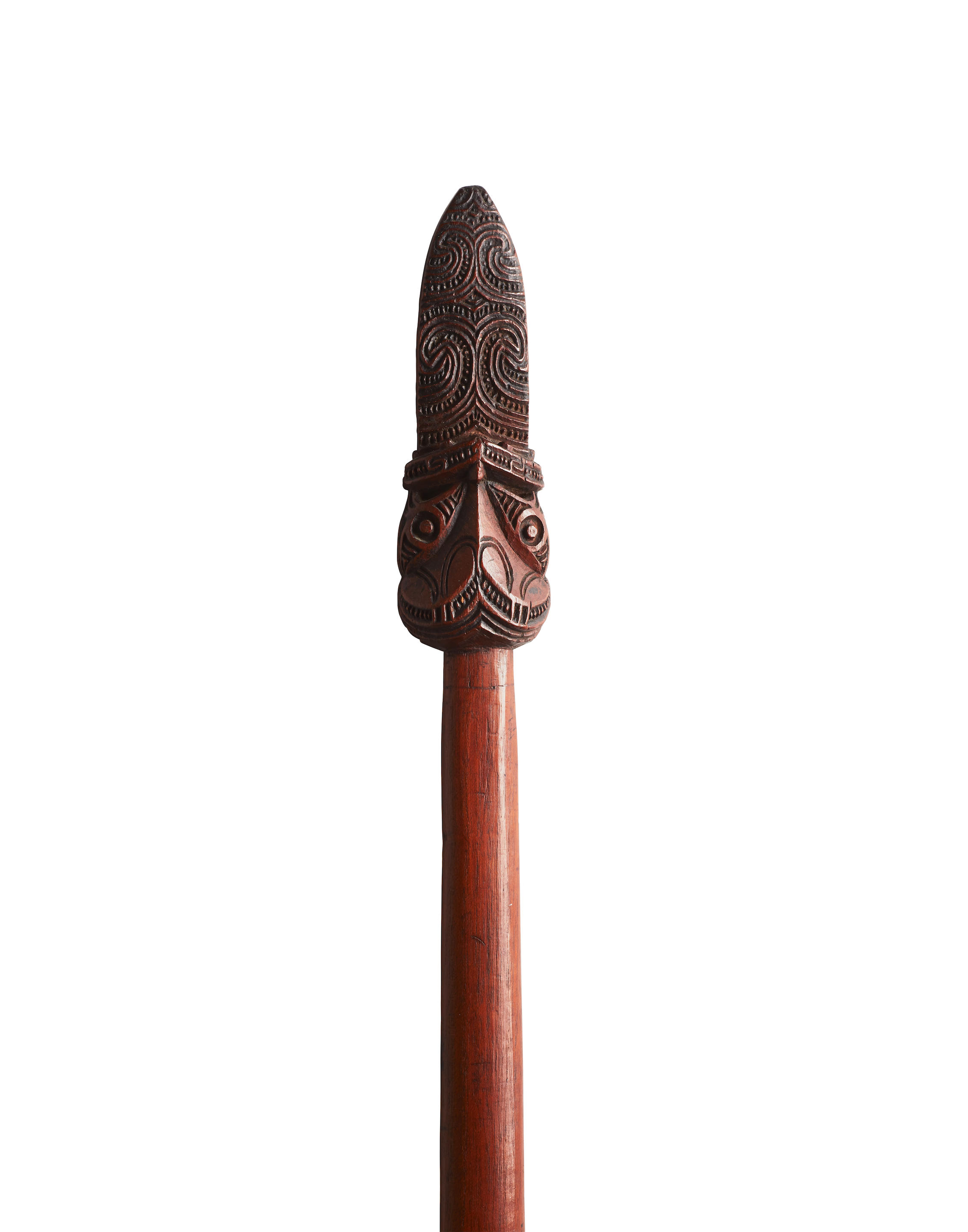
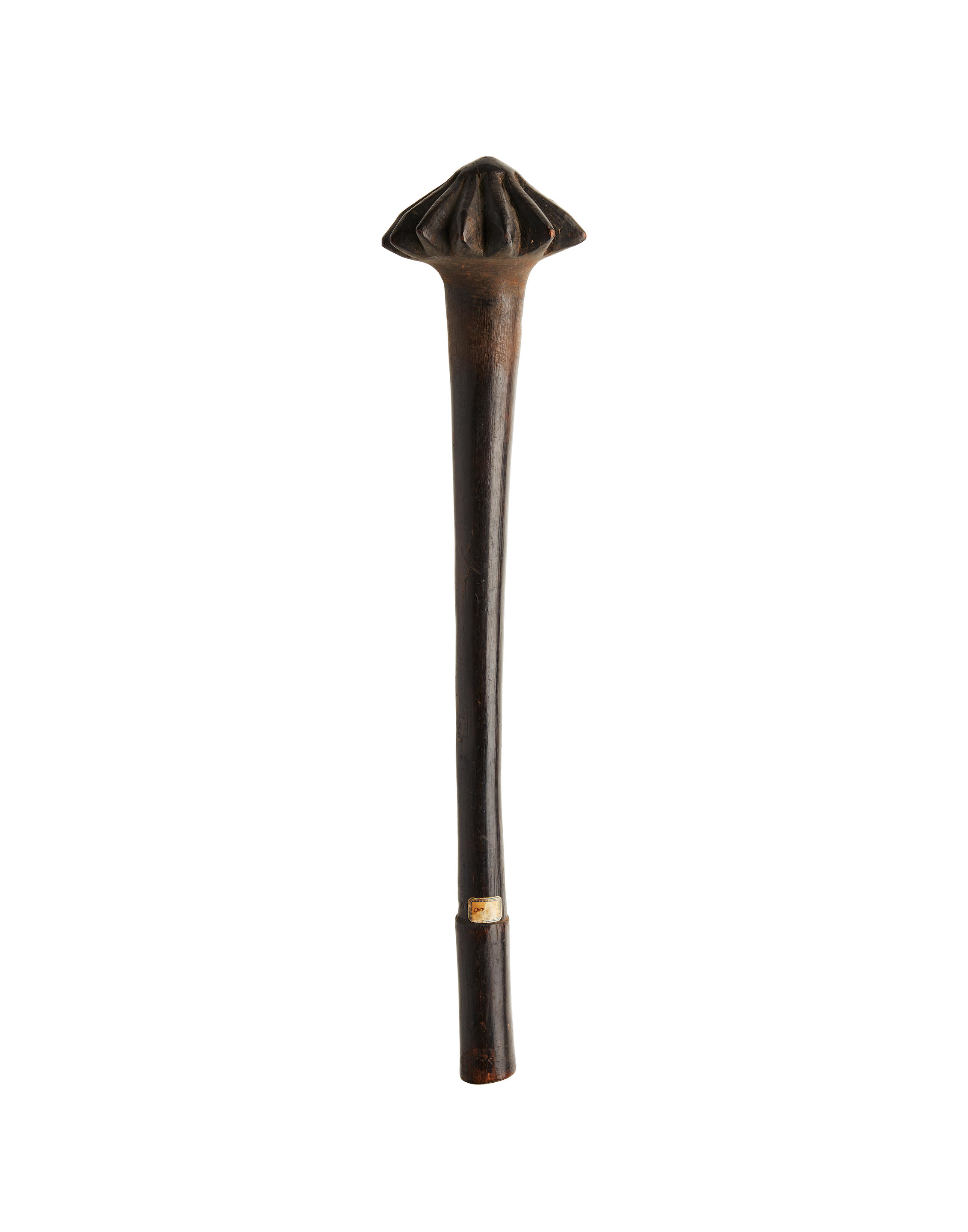
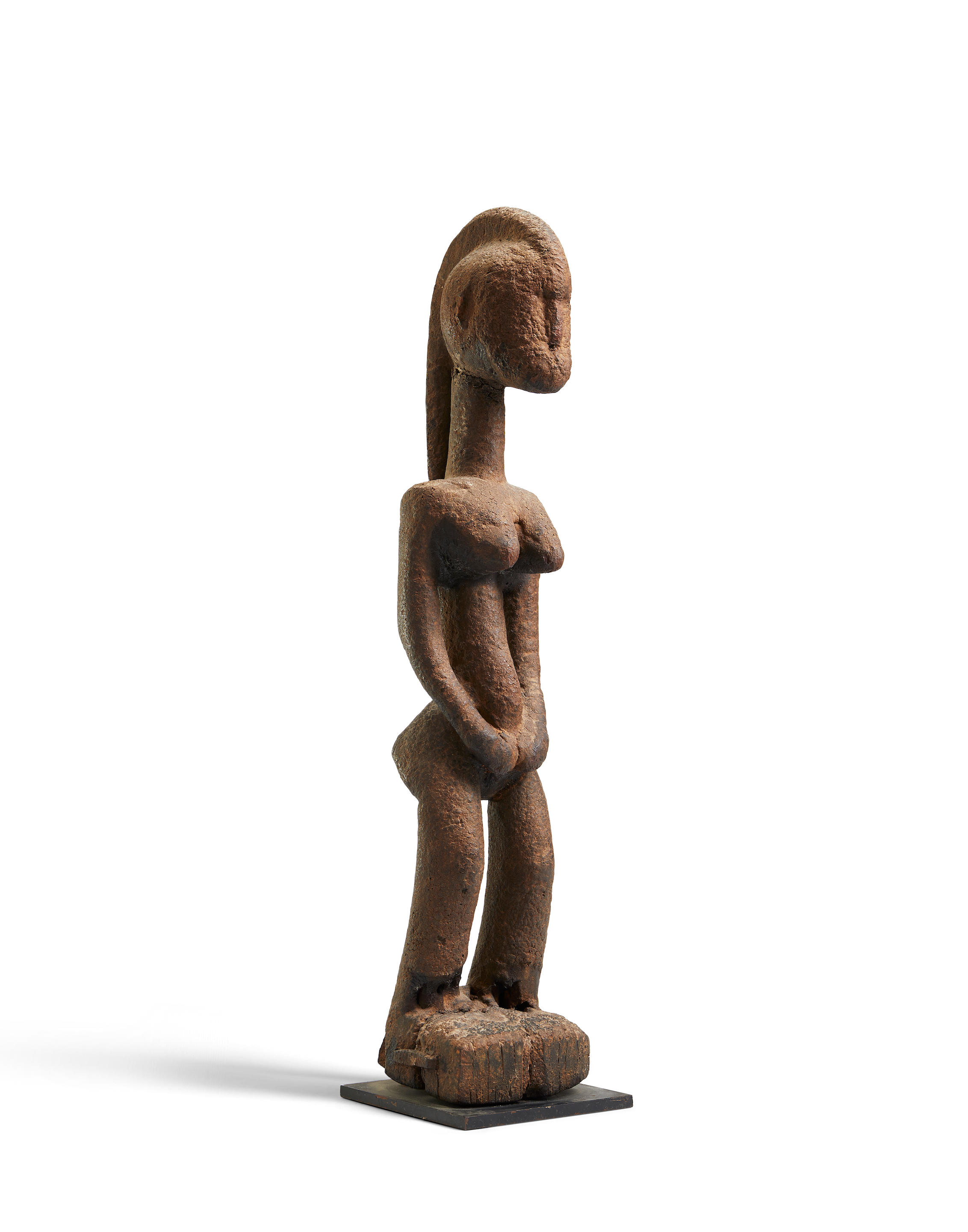
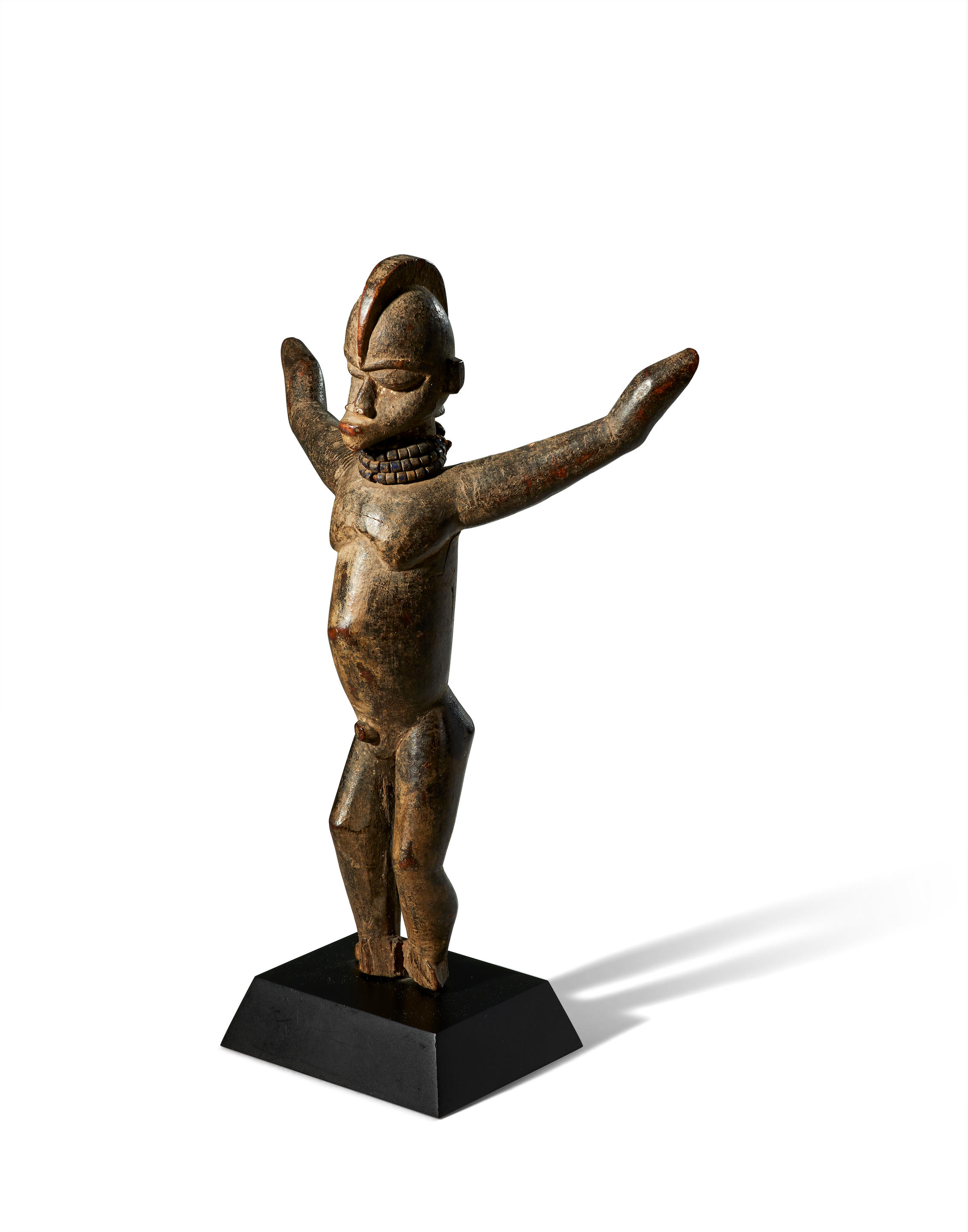
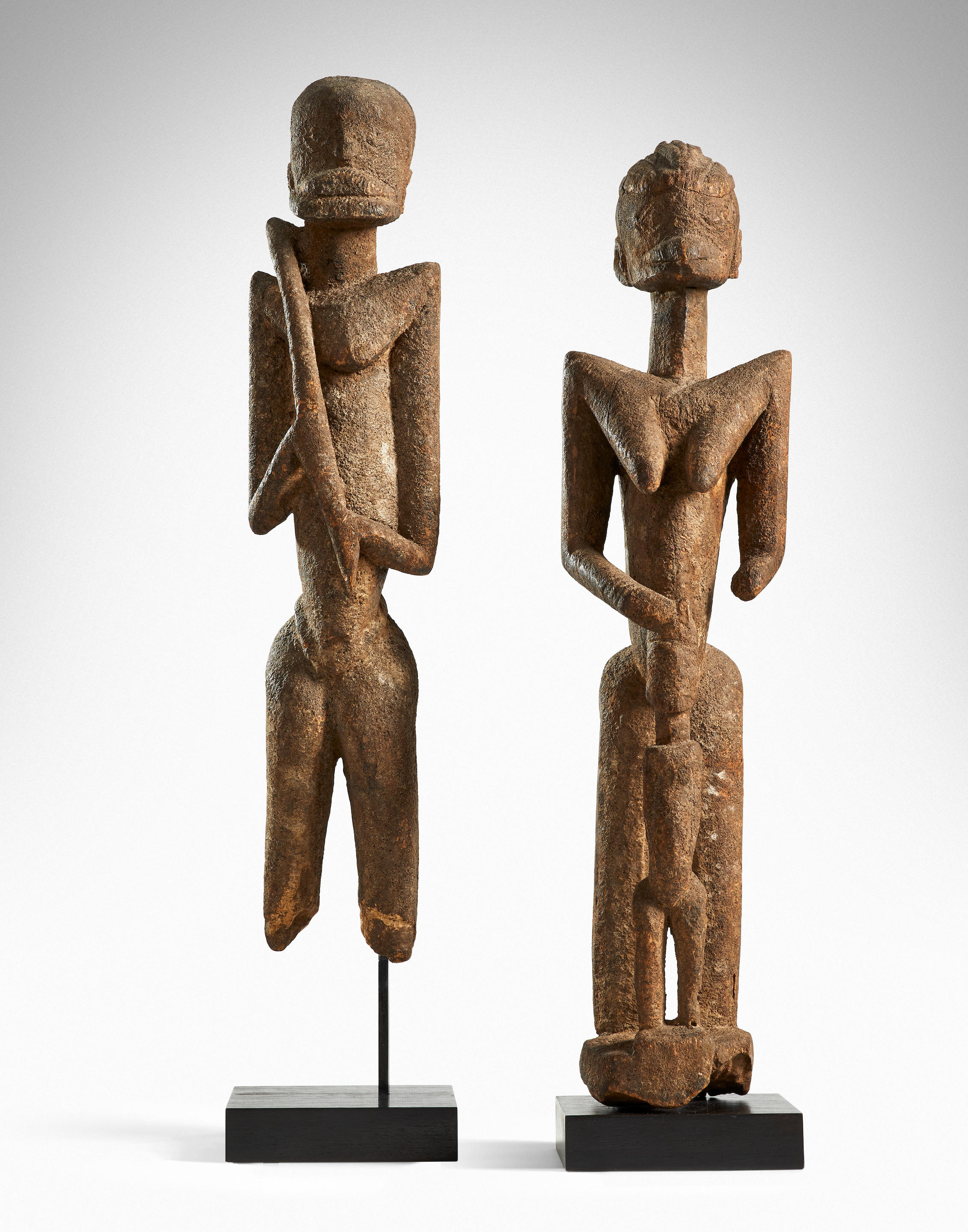
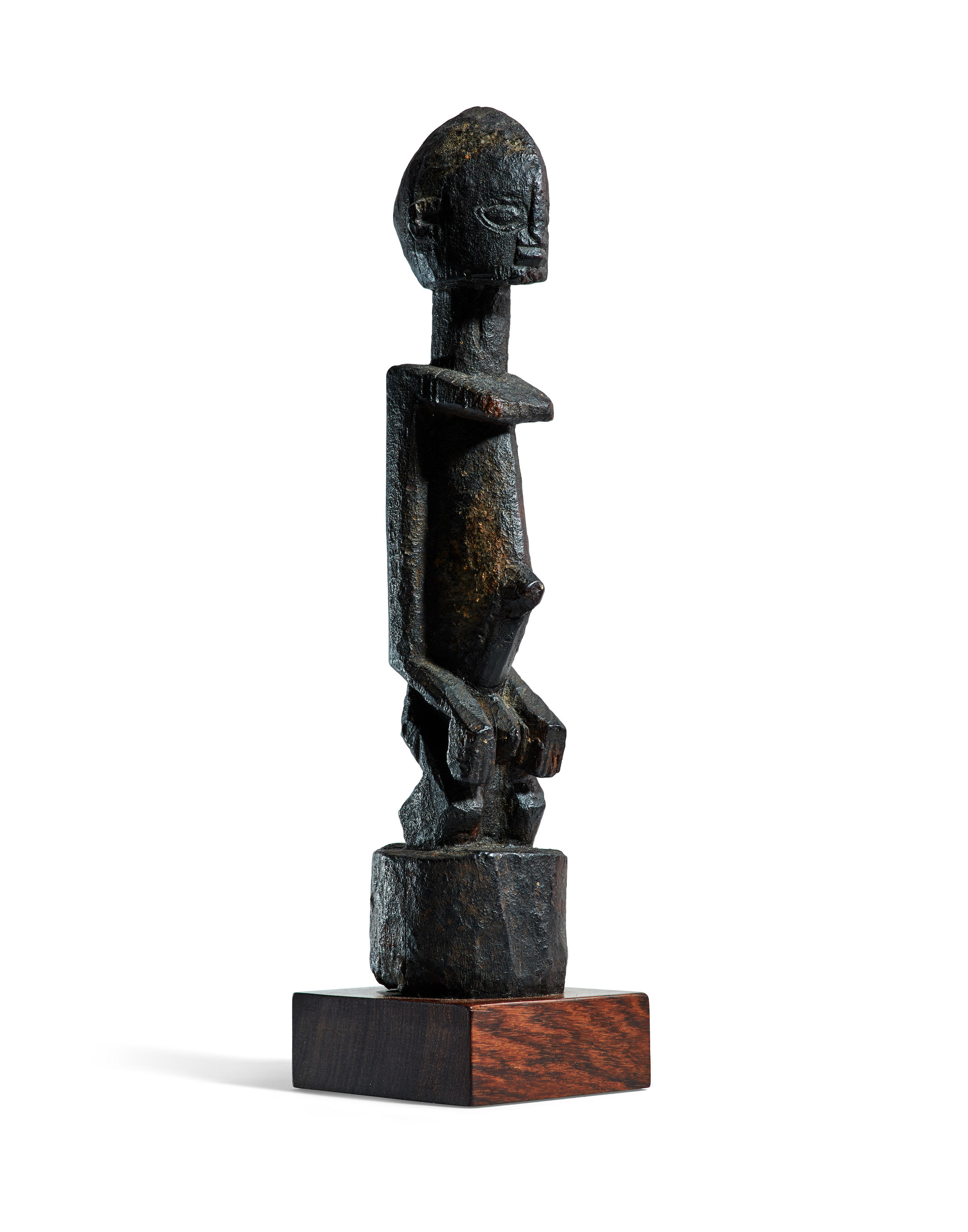
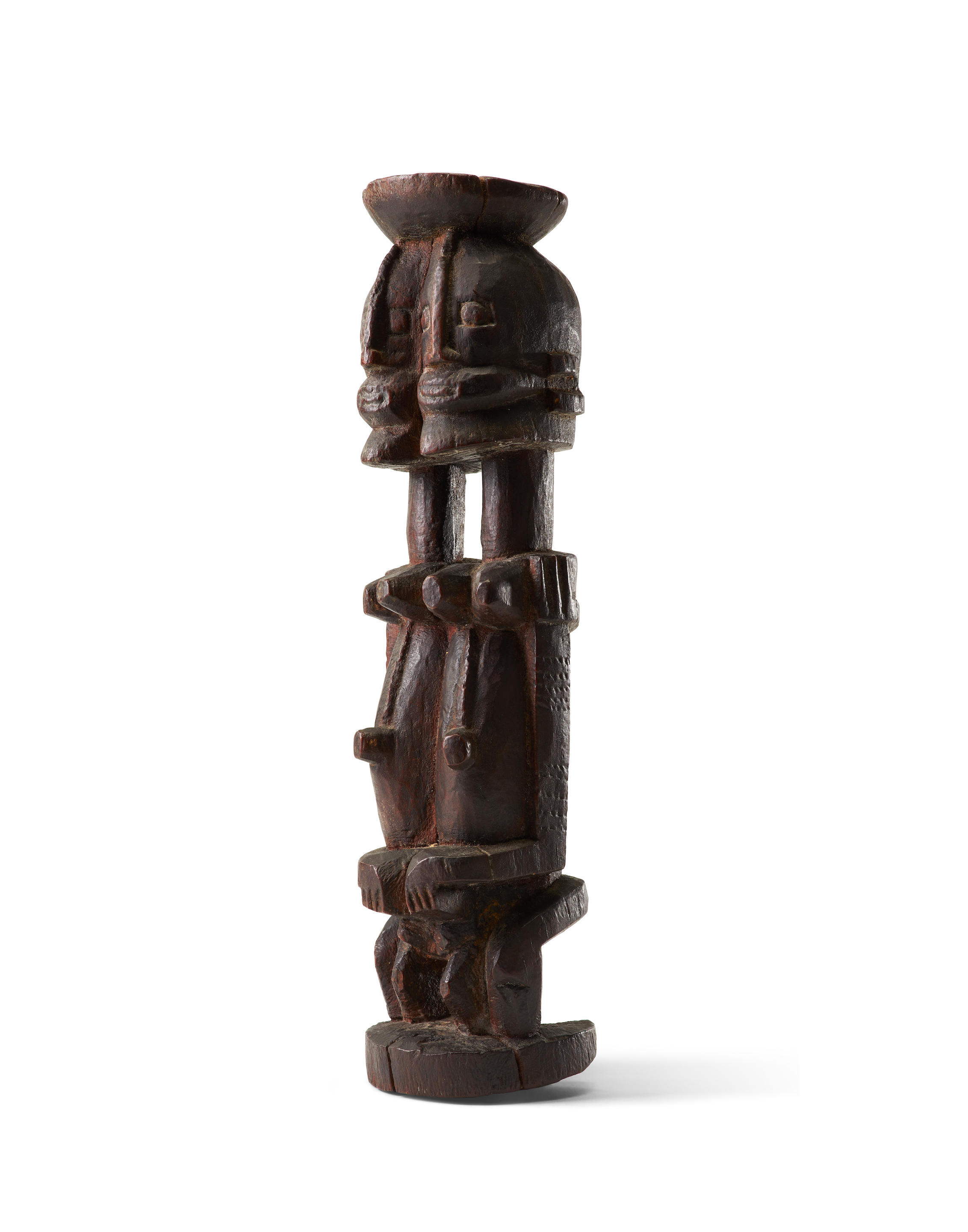
Try LotSearch and its premium features for 7 days - without any costs!
Be notified automatically about new items in upcoming auctions.
Create an alert